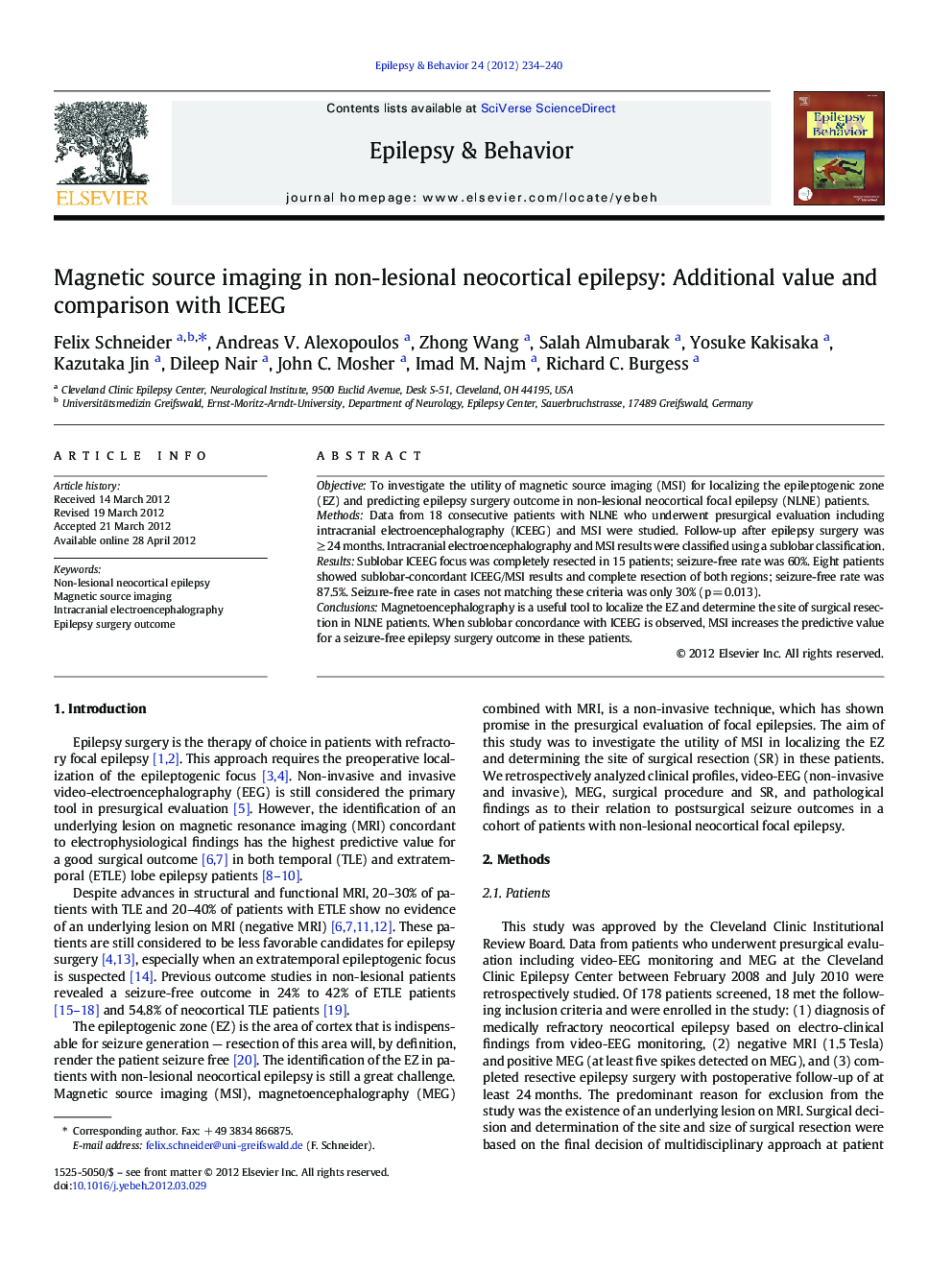| Article ID | Journal | Published Year | Pages | File Type |
|---|---|---|---|---|
| 6014273 | Epilepsy & Behavior | 2012 | 7 Pages |
ObjectiveTo investigate the utility of magnetic source imaging (MSI) for localizing the epileptogenic zone (EZ) and predicting epilepsy surgery outcome in non-lesional neocortical focal epilepsy (NLNE) patients.MethodsData from 18 consecutive patients with NLNE who underwent presurgical evaluation including intracranial electroencephalography (ICEEG) and MSI were studied. Follow-up after epilepsy surgery was â¥Â 24 months. Intracranial electroencephalography and MSI results were classified using a sublobar classification.ResultsSublobar ICEEG focus was completely resected in 15 patients; seizure-free rate was 60%. Eight patients showed sublobar-concordant ICEEG/MSI results and complete resection of both regions; seizure-free rate was 87.5%. Seizure-free rate in cases not matching these criteria was only 30% (p = 0.013).ConclusionsMagnetoencephalography is a useful tool to localize the EZ and determine the site of surgical resection in NLNE patients. When sublobar concordance with ICEEG is observed, MSI increases the predictive value for a seizure-free epilepsy surgery outcome in these patients.
⺠We investigate Magnetic Source Imaging (MSI) in the presurgical evaluation of non-lesional neocortical epilepsies. ⺠MSI provides useful additional information compared to Intracranial EEG (ICEEG) alone. ⺠MSI is useful to localize the epileptogenic zone in these patients. ⺠Sublobar concordance of ICEEG/MSI results increases the predictive value for a seizure-free surgical outcome.
